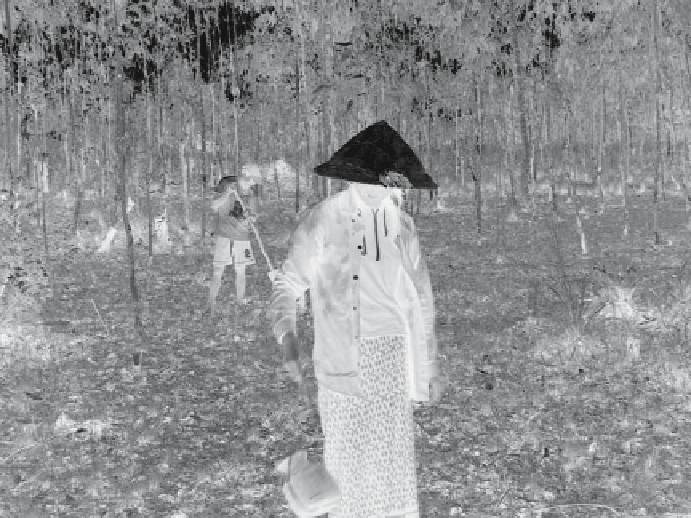Agriculture Reference
In-Depth Information
Photo 13.1
Smallholders digging for insects in their rubber plantation, Salavane, Laos PDR (©
K. Barney)
According to the headman, there are a number of primary reasons why villagers
would be considered as 'poor' in Naa Pang Yai. These factors include: (i) a young,
recently married family (ii) inherited little land from their parents, (iii) loss of a
spouse, and (iv) requirement to rent land and/or buffalos for agricultural produc-
tion. As in many areas of rural Laos, migration is also having a deep effect on vil-
lage social structures. In 2005, four or five villagers were working in Salavane
capital in the state bureaucracy, another four or five villagers worked in Vientiane
capital, and 15 to 20 teenagers had migrated across the Mekong for risky and illegal
labour market opportunities in Thailand.
In terms of core knowledge capabilities, interviewed villagers consistently rated
highly their abilities to farm wet-rice successfully, even under prevailing conditions
of poor soils and an unpredictable climate. Paddy yields however are generally low
if compared to other lowland districts in Laos, at about two tonnes per hectare with
fertilizer. Rice yields drop by half without fertilizer applications. Villagers rated
their knowledge of markets, and abilities in negotiating commercial transactions, as
one of the areas they have the least amount of knowledge. As the soils in the village
are drier and less productive than, for instance, in nearby Lao Ngam district, farm-
ers in Naa Pang Yai do not plant teak, coconuts, rubber, or coffee, crops which are
widely planted on the slopes of the Bolavens plateau. Previous to the arrival of the
ADB ITPP project, Naa Pang Yai farmers had no experience with commercially-
oriented tree planting.

Search WWH ::

Custom Search